Ammonia control evolves to poultry litter preparation
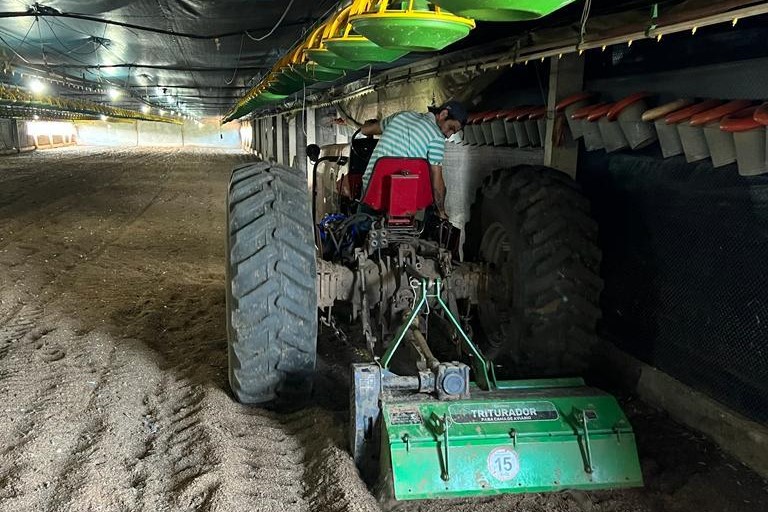
High ammonia levels are seen as a challenge in poultry production worldwide. The toxic gas threatens the health of birds and humans, generating financial losses and social damage in the absence of proper management.
Nitrogen is a component of poultry diets, via either protein or other sources. Some of this nitrogen will be used by the animals metabolism and is used in tissues or egg conformation. However, most of it is excreted in the urine or faeces in the form of uric acid (around 80%), ammonia (around 10%), and urea (around 5%). Once the uric acid and urea are excreted, they are converted into ammonia through microbial and enzymatic breakdown via the bacteria and enzymes found in the poultry litter.
During this process, ammonia is released in large quantities into the air as a gas, and both birds and farm workers will be exposed to it. Scientific literature recommends no more than 10 ppm of ammonia in the air to keep production safe for poultry flocks and workers.
“The volatilisation of nitrogen heightens the level of this highly polluting gas that not only affects the agricultural environment but also the most diverse ecosystems, and human and animal health,” says veterinarian Henrique Magalhães.
Diseases, disorders, and more
According to Magalhães, the absence of adequate ammonia monitoring and control might generate a greater predisposition to respiratory diseases, brain disorders, liver damage, and vascular and muscle injuries in humans.
“As for the birds, the lack of clean air to breath affects their well-being and reduces their productive performance, which results in a significant economic loss from flock uniformitiy and underdevelopment of the carcasses,” he details.
The specialist sees that ammonia levels above 10ppm are reflected in reduced feed intake and growth, and subsequently lower feed conversion rates, as well as irritation in the eyes and lungs of birds, including blindness and irreversible respiratory problems.
“Increased mortality rates in all phases, but mainly in the 1st and 2nd weeks, is also common. And these are just some of the most harmful effects of exposure to ammonia,” he adds.
Usual management
The most commonly used control method includes a 12-15 day empty period between bird placements. During this time, called the sanitary void, the poultry litter is crushed after fermentation and the shed is ventilated. In some cases, the application of lime is recommended to speed up drying in humid regions. It is also essential to have adequate ventilation, good maintenance of drinkers, and attention to animal density to limit the deposition of organic matter. Bedding replacement every 5-6 flocks, or at least once a year, is also recommended.
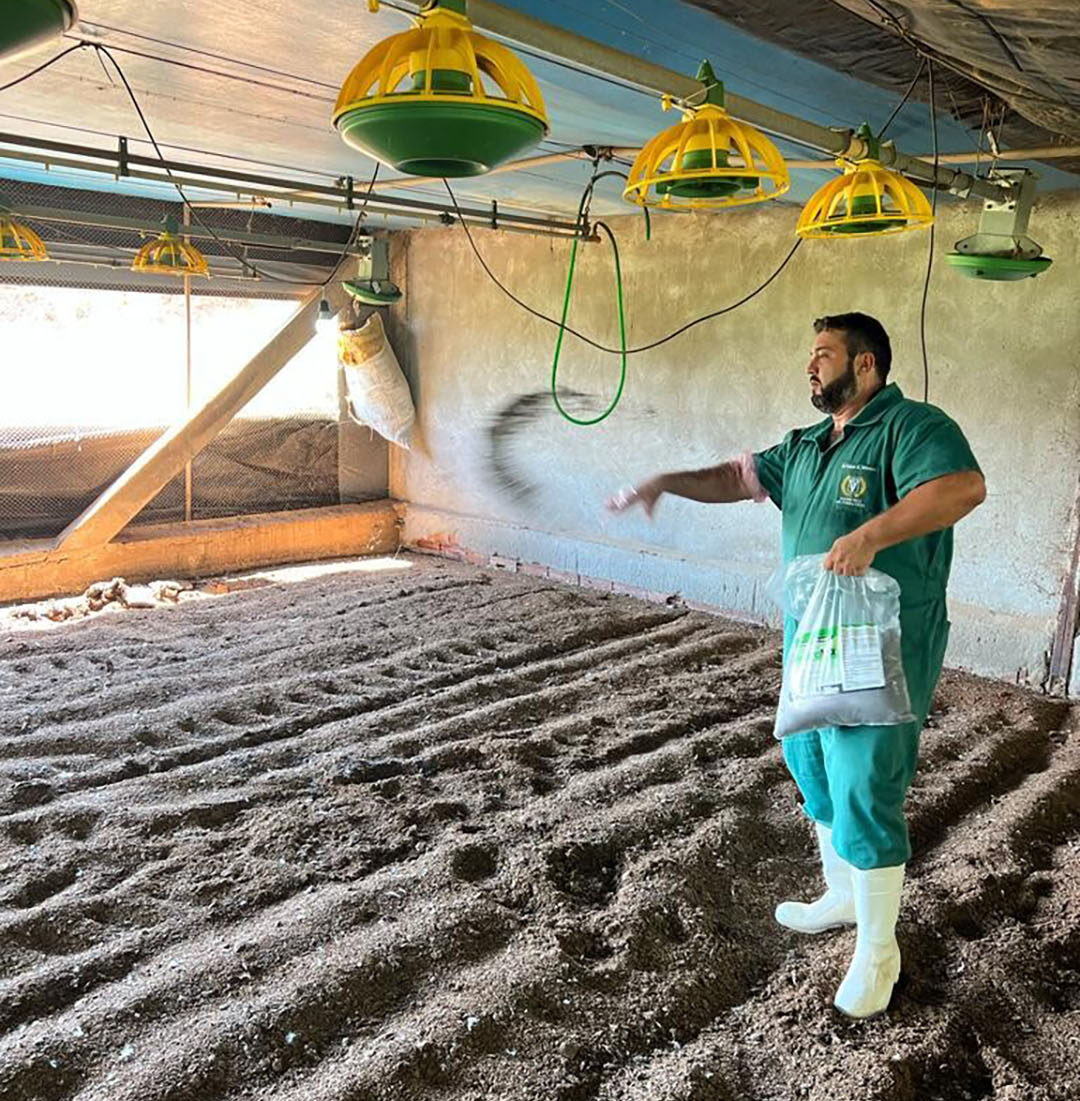
Variable effectiveness
However, the efficiency level of ammonia control is quite variable with this method. “It all depends on the type of litter, handling inside the shed, time of year, number of litter reuses, etc. To get an idea, there are sheds that even with the exhaust fans on and ventilating for days have ammonia levels above 90ppm,” alerts Henrique. In other words, conventional methods to control ammonia levels don’t guarantee that the ammonia will be neutralised. “Even if their levels are reduced at the time of flock placement, their increase is expected after approximately 15 days,” he comments.
Henrique notes that this scenario is even worse during the winter since the shed must remain closed to heat the birds. Due to that, one of the solutions found by some producers is introducing new bedding for each new flock. “This can be an interesting solution for ammonia control; however, it raises the handling costs in the pre-housing period substantially,” says Magalhães.
Alternative methods
There are some alternative solutions to mitigate ammonia presence and effects. Among them are modifications in feed formulation and supplementation and adaptations in the building and ventilation of sheds. However, corrective treatment of litter seems to be the most effective method, and that is likely to interfere less with animal handling. In that sense, aluminium sulphate, Yucca schidigera extract, and Neutromix – a new product presented by I9 Vetiagro in Brazil – are alternative solutions.
Aluminium sulphate
Aluminium sulphate application over the litter before bird placement can reduce ammonia levels in the sheds for up to 6 weeks; however, it losses effectiveness after some time. Moreover, the use of aluminium sulphate requires 2-5 days between application and bird placement and has variable costs since the recommended dose ranges from 45-90 grammes per bird or ± 200 grammes per m2.
Yucca schidigera
Yucca schidigera extract reduces urea levels and ammonia ions in a bird’s blood, slows excessive nitrogen breakdown in the cecum, and fixes ammonia in the stool so it is not released as a gas. The extract can either be incorporated into the feed or as a spray deposited on the faeces to reduce the ammonia odour. “In Brazil, we are not aware of any company that uses any of these products in everyday life,” says Henrique.
Neutromix
Finally, Neutromix instantly neutralises ammonia (levels <1ppm) after being incorporated into the litter by preventing the conversion and volatilisation of nitrogen. The product is applied in doses of 100-200 grammes per m2 and 15-30 millilitres per m2 depending on the type and humidity of litter conditions before the birds’ housing.
The continuous use of Neutromix, that is, with a new application at each new cycle, increases the ‘shelf life’ and the concentrations of nitrogen, phosphorus, and potassium in the bed (to be used as an organic fertilizer) and helps to combat the presence of darkling beetles (Alphitobius diaperinus).
Magalhães concludes: “We see that the use of Neutromix returns as a greater financial gain for producers, despite all the other sanitary, productive and social benefits already presented.”
 Beheer
Beheer



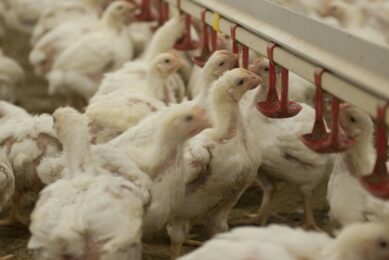
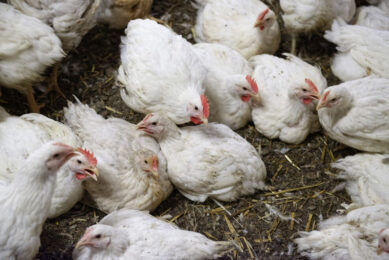
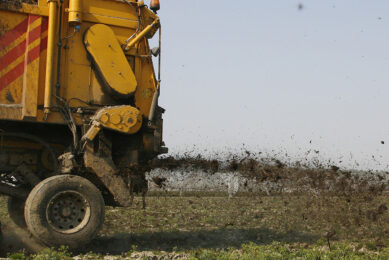





 WP Admin
WP Admin  Bewerk bericht
Bewerk bericht